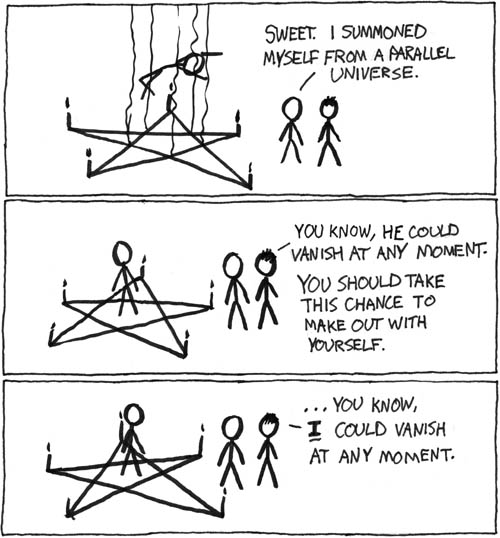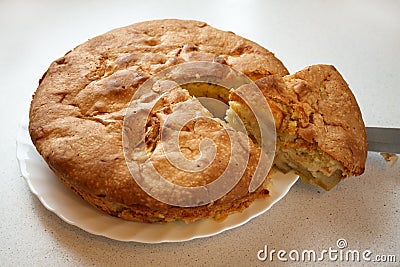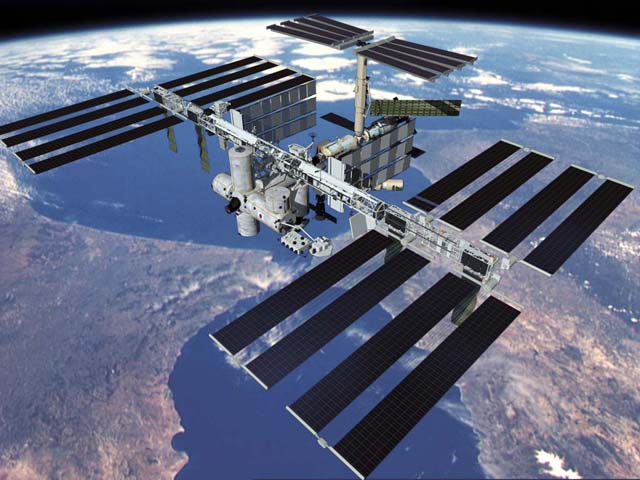Hello all!
Matter as we know is something which we can feel touch and sense. Matter is everything around us and of course, we are made of matter. Our home, food, water, books, clothes, trees, seas, oceans, planet, Moon, Sun, stars, galaxies, the whole Universe are all made of something fundamental which is worth thinking deep into the roots of science, on which we are born, evolve and will die.
The thinking of matter can be traced back to the centuries before Christ. It was an age of understanding the basics of nature, and how it works. Theologians like Leucippus and Democritus were the first persons to ask the question 'what are we made of '? This question may sometimes seem to be intriguing to you and me, but think about because thinking is a way in which you can attempt to answer the most burning questions in your life, it is the prerequisite of knowledge.
In his first attempt, Democritus answered that as- when you cut an apple pie into a half, and that two into halves and that four into halves and so on till you go for nearly ninety cuts, you get a finer pulpy stuff. Pick up a grain from it. Look closely and even try to squash it, squeeze it. If you have a magnifying glass, have a look through it.
This tiny speck of bread is still remained with millions and millions of atoms in it which are 'bonded' to each other to form substances that eventually make a sense of taste on your tongue.
The combination of these atoms to form substances called compounds which are unique in composition and even absence or addition of one atom can make a lot of difference in physical and chemical properties such as colour, taste, state, etc.
For example, take two different gases. Hydrogen, which lights up the stars and Oxygen, on which we respire. Now mix these two gases in a vessel and light em' up with a match and pop! you can see water droplets hanging on the walls. This is just one examples out of thousands in our daily lives. Similarly soft metals like sodium and poisonous gases like chlorine form salt with which you cook food. Like these, there are totally 118 elements which we have been accounted from the age of early man till the age of nuclear wars. Humans made and had a great deal with all these individual and unique atoms in various, say 'n' number of ways, we have found some naturally and some we extracted from earths crust and some we have artificially synthesized in laboratories. All these elements have been classified according to their composition, physical and chemical properties such as atomic number to form a periodic table.

Now lets go much deeper. As you know when you look inside an atom, you can see swarms of electrons humming around the central nucleus which has tightly bunched up the protons having positive charge and neutrons having no charge. When you try to split them up, it is called nuclear fission which releases vast amount of energy and when you try to join them, its nuclear fusion which even gives much more energy and fission process.
Fission is the one going in our nuclear plants on earth and fusion is the one going on inside the Sun and other stars where trillions of tons of hydrogen gets converted into billions of tons of helium each and every second. The Sun is really a giant furnace............

Now lets talk about the elements. How do they differ from each other? It all depends on whats inside an atom of an element and how its configured. Primarily it depends upon the number of protons and neutrons in the nucleus. For example in Carbon, the building block of life has 6 protons and 6 neutrons whereas hydrogen has got just 1 proton and 1 electron. From Carbon, if we take out 1 proton, it turns into boron and if we add 1 proton and 1 neutron, it turns into nitrogen. So in this way we have discovered and configured and discovered a total of 118 elements till now and are trying our best to know more.
So far we have discussed about something on a very tiny scale, to a limited space. Not just on Earth but on the scale of the cosmos, we come across much more disturbing sort of things which do not at all seem to look like reality in our 'coomon' sense amount which we will discuss later in this article.
Now, how do we know how something works. Answer, is to peep inside. But how can we peep inside an atom which is very very tiny ans bounded by energies of grand orders. The only way, is to smash them with each other, 'So, why don't we break them in a pressure cooker?' you may ask. Since the kinetic energy of the atoms increase to such levels that their speeds increase and collide with each other. But that is not at all enough. The energy applied on the gas molecules by a pressure cooker is only a fraction it is supposed to get.


For this, we use use tunnels. Long circular tunnels kilometers in diameter with powerful electromagnets which trap, guide and accelerate bunches of extracted individual subatomic particles like protons at very very high speeds, nearly to the speed of light by applying huge amount of electricity that is worth rising their electric bills to cross millions of dollars, and just smashing them into each other at the right place and at the right moment, to observe the movements of much tinier particles after collision with the help of sensitive detectors. The recent craze in these particles accelerators such as LHC of CERN and Tevetron of Fermilab are the subjects of anti-matter and Higgs Boson. These are the disciplines which are gripping scientists day and night to unravel the mystery of the small.

The concept of anti-matter is some what intriguing. When you look yourself in a mirror, what do you see? simple, yourself. But wait, did you anytime wonder if that person ever existed. This is worth thinking because there may be a universe, there may be a Sun, an Earth, a you and a me on the other side of the mirror i.e. a parallel universe which entirely consists of anti matter.....
Then the Higgs Boson is a particle formerly believed to be just a fairy tale, but now being searched extensively only because it is said to hold the secret of matter. Without it we all would be waves hanging around the empty universe.
So why do we do this stuff? Why particle physicists along with a whole new scientific community is spending millions of bucks just to find out and know about the tiny by smashing atoms and wasting resources? Why does it matter exploring matter????
In the start, you have read that we are born, evolve and will die on matter. The same implies with the stars, the same implies with the galaxies.............. and the same seems to imply with the cosmos. God must be partial to us, but I think he is not at all with the universe we are living in. The universe, for us seems to be benign as well as hostile at the same time. The benevolent creator chose a good location for us, a nice star, a habitable orbit, perfectly suited........ at the same time, being such smooth in evolution without any gene mutation is a great thing, otherwise it would have altered our fate. We had our own race involved in wars, crimes, conflicts. Along with these, we have harmed our own environment. But little did we think of how we are created, we would be really glad and humble to ourselves.
 |
| info-graphic showing the Big Bang, the moment till the present |
Nearly 15 billion years ago, after the explosive outpouring of matter and energy of the big bang, the cosmos was without form. There were no galaxies, no planets, no life. Deep impenetrable darkness was everywhere,hydrogen atoms in the void. Here and there denser accumulations of gas were imperceptibly growing, globes of matter were condensing - hydrogen raindrops more massive than suns. Within these globes of gas was first kindled the nuclear fire latent in matter. A first generation of stars was born, flooding the Cosmos with light. There were in those times not yet any planets to receive the light, no living creatures to admire the radiance of the heavens. Deep in the stellar furnaces the alchemy of nuclear fusion created heavy elements, the ashes of hydrogen burning, the atomic building materials of future planets and lifeforms. Massive stars soon exhausted their stores of nuclear fuel. Rocked by colossal explosions, they returned most of their substance back into the thin gas from which they had once condensed. Here in the dark lush clouds between the stars, new raindrops made of many elements were forming, later generations of stars being born. Nearby, smaller raindrops grew, bodies far too little to ignite the nuclear fire, droplets in the interstellar mist on their way to form the planets. Among them was a small world of stone and iron, the early
Earth.

Congealing and warming, the Earth released the methane, ammonia, water and hydrogen gases that had been trapped within, forming the primitive atmosphere and the first oceans. Starlight from the Sun bathed and warmed the primeval Earth, drove storms, generated lightning and thunder. Volcanoes
overflowed with lava. These processes disrupted molecules of the primitive atmosphere; the fragments fell back together again into more and more complex forms, which dissolved in the early oceans. After a time the seas achieved the consistency of a warm, dilute soup. Molecules were organized, and complex chemical reactions driven, on the surface of clays. And one day a molecule arose that quite by accident was able to make crude copies of itself out of the other molecules in the broth. As time passed, more elaborate and
more accurate self-replicating molecules arose. Those combinations best suited to further replication were favored by the sieve of natural selection. Those that copied better produced more copies. And the primitive oceanic broth gradually grew thin as it was consumed by and transformed into complex condensations of self-replicating organic molecules. Gradually, imperceptibly, life had begun.

Single-celled plants evolved, and life began to generate its own food. Photosynthesis transformed the atmosphere. Sex was invented. Once free-living forms banded together to make a complex cell with specialized functions. Chemical receptors evolved, and the Cosmos could taste and smell. One-celled
organisms evolved into multicellular colonies, elaborating their various parts into specialized organ systems.

Eyes and ears evolved, and now the Cosmos could see and hear. Plants and animals discovered that the land could support life. Organisms buzzed, crawled, scuttled, lumbered, glided, flapped, shimmied, climbed and soared. Colossal beasts thundered through the steaming jungles. Small creatures emerged, born live instead of in hard-shelled containers, with a fluid like the early oceans coursing through their veins. They survived by swiftness and cunning. And then, only a moment ago, some small arboreal animals scampered down from the trees. They became upright and taught themselves the use of tools, domesticated other animals, plants and fire, and devised language. The ash of stellar alchemy was now emerging into consciousness. At an ever-accelerating pace, it invented writing, cities, art and science, and sent spaceships to the planets and the stars. These are some of the things that hydrogen atoms do, given fifteen billion years of cosmic evolution.

It was a long journey from the first hydrogen atoms to the international space station. We have really came a long way and have a long way to go. The lifetime of humans is not even a speck. In this elegant motion picture, we are just a frame lasting for a very short span of time.We, being gifted the presence of mind need to make a re account of our own history and it is truly mandatory for us to know ourselves and what we are made of much deeper and deeper. Now that matters a lot..........
Thanks
















